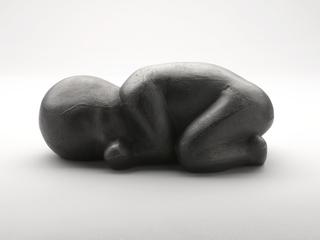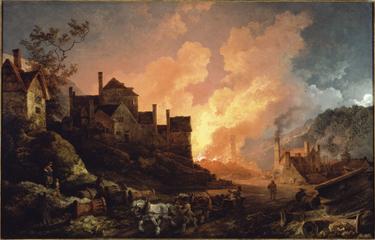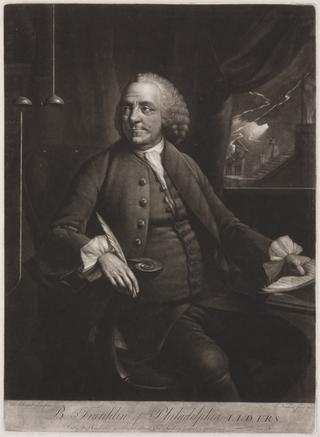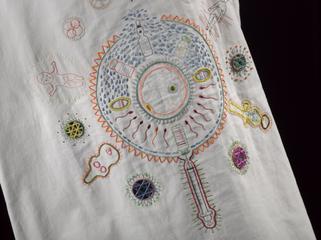
'St Luke's Hospital', print, London, 1809






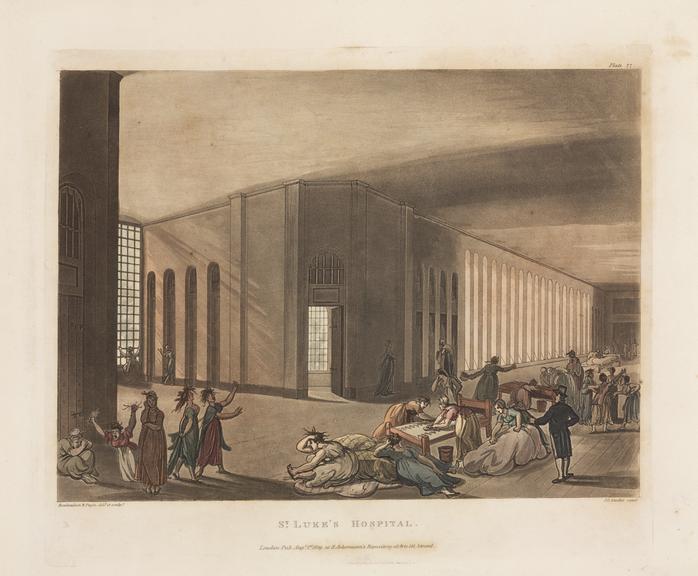



Aquatint print of an interior scene at St Luke's Hospital for Lunatics in Old Street, London, by J.C. Stadler (after Augustus Pugin) and published 1st August 1809, for R Ackermann's Repository of Arts, 101 Strand, London.
St Luke’s Hospital for Lunatics first opened in 1751 in a converted foundry on Windmill Hill, Upper Moorfields, London. This was close to what was the then site of Bethlem Hospital (aka Bedlam) and St Luke’s was intended to relieve some of the pressure on that institution. However, its capacity was limited from the start and within two decades moves were underway to build a larger hospital on a new site.
This second St Luke’s opened nearby in Old Street in 1786. It was a grand building, with a huge 150 metre wide frontage. Unlike the exterior though, the interior was bleaker with some large, but austere spaces – like that illustrated here – but also single cell-like rooms for 300 patients. Beneath a small window placed high on the wall, each room was sparsely furnished, with bedding straw on a wooden bedstead and no heating.
St Luke’s was more progressive in its treatments than many institutions and, with some improvements made to the building’s interior, its work continued throughout the 19th century. But by the early 20th century it was seen as unsuitable for purpose and the hospital relocated for a third time, to Muswell Hill in North London. The Old Street building was sold to the Bank of England who used it as a print works, before it was demolished in 1963.
This print was made from an original painting by Thomas Rowlandson (1756-1827), in association with French architect and draughtsman Augustine Pugin (1762-1832). It was engraved by John Stadler (active 1780-1812) and printed by Rudolph Ackermann (1764-1834), a German printer, as part a famous series of images called 'Microcosm of London.'

